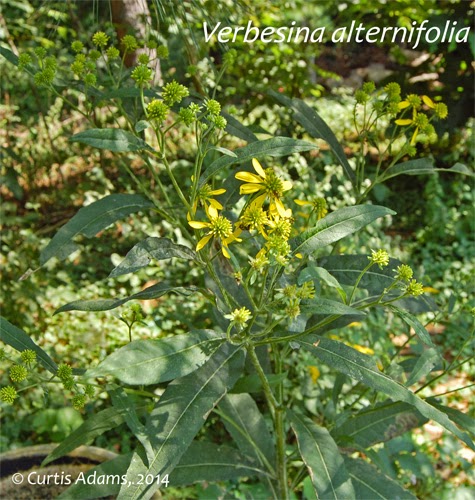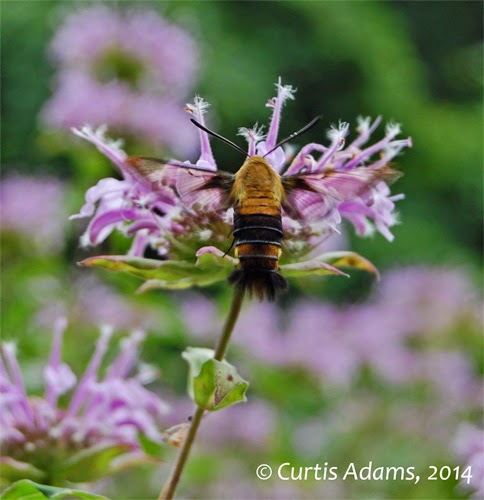 |
| In direct sun the red of this Lobelia stands in perfect contrast to the green background. |
This is the first year for my Cardinal Flowers, Lobelia cardinalis, to bloom and I must
say it really pops on a grass green back ground. I planted these as seedlings last year and
they never got very big. Part of that
was due to deer browsing. This year the
deer ate a little early in the season, but did not come back after the buds
began to form. I don't know if that has
to do with a change in the taste of the maturing plant, or if it was due to
spraying the plants with a new deer repellent, Bobbex. Besides delighting the eye, the cardinal
flowers are a big hit with the butterflies.
 |
| This Scarlet Sage is growing in a partly sunny garden. |
Before I had a place with moist soil I relied on this Blood or
Scarlet Sage, Salvia coccinea, to get
an intense shade of red in late summer.
It grows well in moist to dry soils and will tolerate some shade. Scarlet sage is usually grown as an
annual. In the past it has reseeded itself in my
warm zone 6 garden in Boston. We'll see
how it does in my less protected Maryland garden next year. I have seen hummingbirds feeding on this
sage, as well as many bees.
Another major presence in the garden is New York Ironweed, Veronia noveboracensis. This year they are growing to 8 feet. I cut one back by 1/3 at the beginning of July and it quickly grew back fuller than before. This plant is very attractive to butterflies, it has about as many as a nearby exotic butterfly bush.
 |
| Wingstem is named for the rough appendages growing along its stems. |
The predominant open meadow flower of late summer here is Wingstem, Verbesina alternifolia. In the full sun they grow straight up to 3 to over 8 feet. I have allowed a few to grow in the partly sunny gardens near the house. Under these conditions they still grow tall, but they lean forward to get more sun, eventually flopping over. Blooming period is about a month long, mid August to late September.
Under the shade of pines I am trying out several species of
Goldenrods. The first to bloom is Elm-leaved Goldenrod, Solidago ulmnifolia. As with the cardinal flower, these were
browsed heavily by the deer in their first year, but this year they are
reaching bloom (maybe with the help of Bobbex).
Other goldenrods I am trying in the shade are Zigzag, Bluestemmed and
Showy Goldenrods.
 |
| The little whitish flowers of Jumpseed wiggle their way out of the undergrowth. The foliage of this plant is tattered since it is often eaten by some as yet unidentified insects. |
Another shade-tolerant native that is blooming now is
Virginia Jumpseed, Persicaria virginiana. Not particularly showy by itself, en mass it
adds some interesting texture to a shady scene.
There are some forms of this plant with more colorful leaves and red
flowers, but those are not in bloom just yet.
 |
| Aromatic Aster is just beginning its long season of bloom. |
One of the newer additions to the garden is Aromatic Aster, Symphyotrichum oblongifolius 'October
Skies'. Despite its name it has started
blooming in late August (this cultivar is actually named for the flower color,
not the bloom time). This cultivar is
compact and densly blooming. Growing to
about 2 feet tall it is a great choice for near the front of a border. In addition to the good-sized blooms the foliage of this little bush has a pleasing scent.
I just wanted to share this last image of a patriotic color combination of Hibiscus moscheutos, Lobelia cardinalis, and L. siphilitica. It's not a great photographic composition, but it is an example of red, white and blue native flowers blooming at the same time (mid-August).
 |
| This photo could have been improved had I bothered to remove the chicken wire protection from around the Hardy Hibiscus. |

















